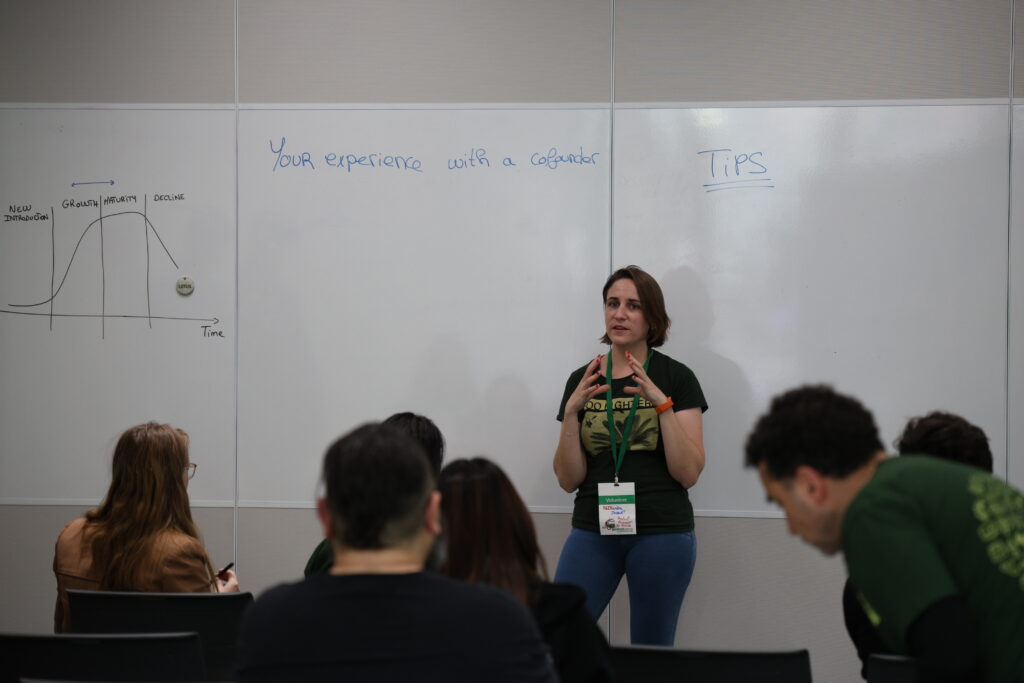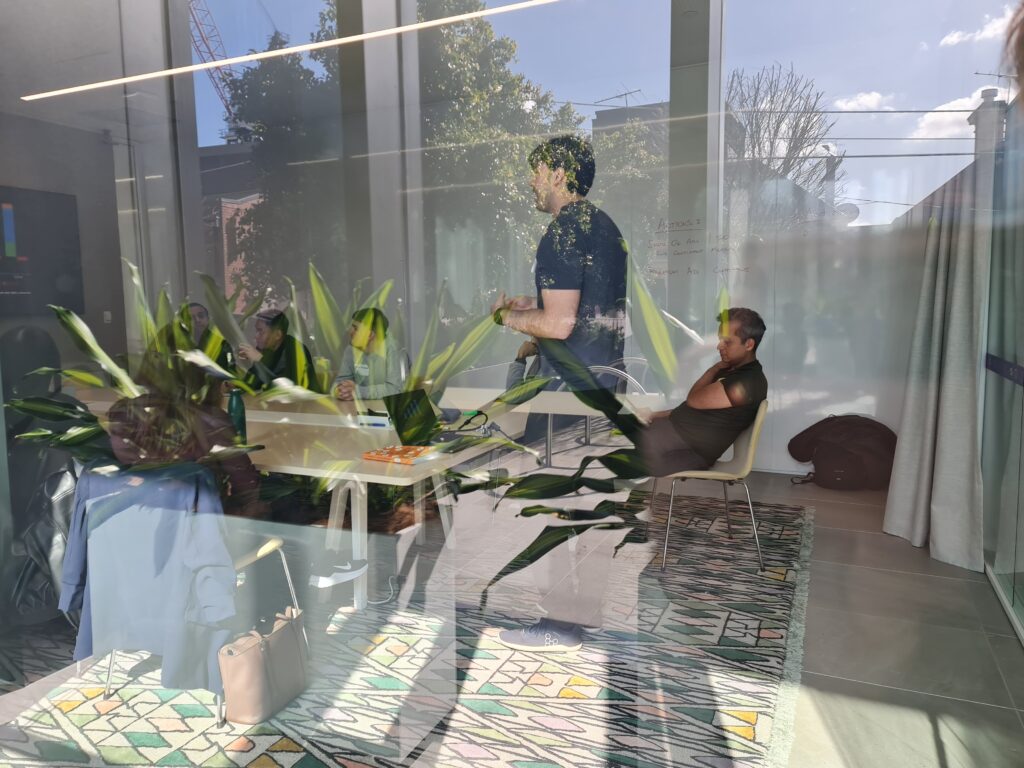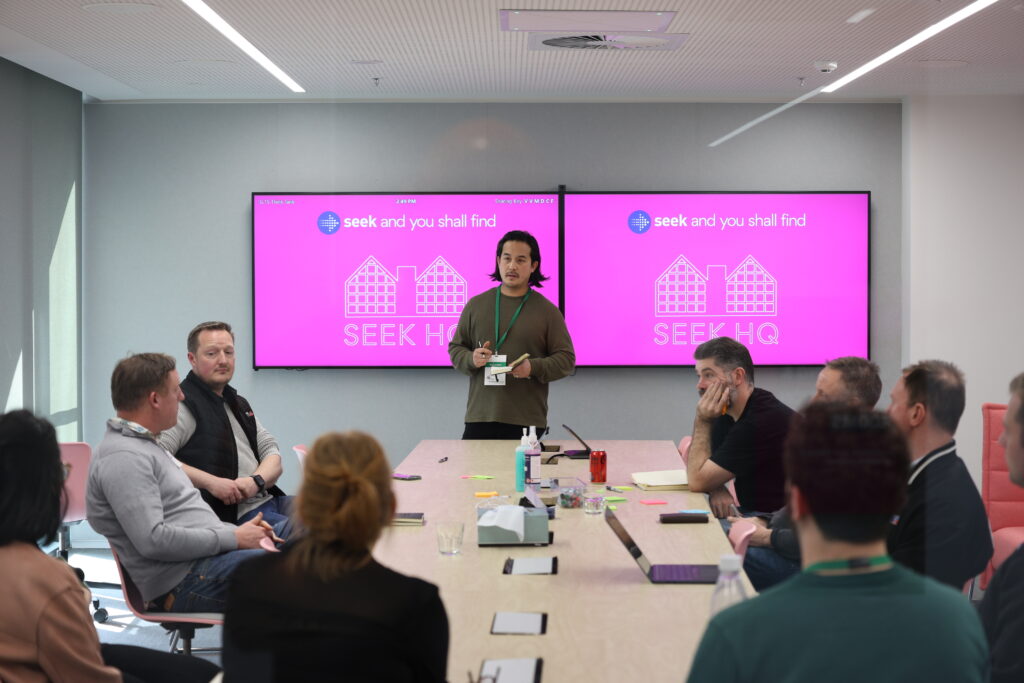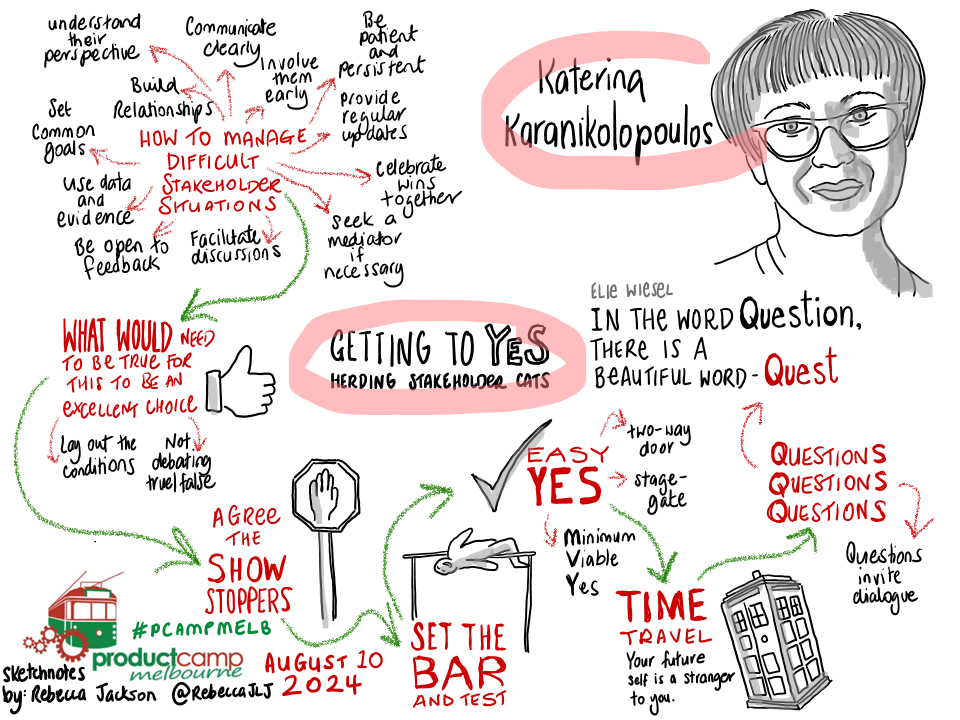Over the course of the day we had 28 talks to choose from in our multiple streams. There’s no way to get to everything but we’ve tried to capture some summaries. Thank you to everyone listed here who volunteered to share their knowledge & experience!
Photos by m- & jen leibhart. Sketchnote by Rebecca Jackson
Alexandra Jacquet spoke on How to Build a Strong Relationship with your Founder. The key takeaways are:
- Understand Your Founder’s Motivations
- What are they trying to achieve? What are their personal and business goals? Who or what influences them? Whether it’s a podcast, journal, or someone within the company, knowing these can guide your approach.
- Set an Actionable Plan to Build Trust
- Have honest conversations, set measurable goals, and aim for quick wins. The active strategies will help you take a methodical approach to build trust.
- Educate on the Power of Experimentation
- Regularly share insights from customer learnings and data. Bring your founder along on your journey, explaining your decisions and viewpoints with evidence.
- Speak the Same Language
- Is it data, research, money, frameworks, or something else? Aligning on communication styles can significantly improve collaboration.

Fernando Perra – SQL Coding for PMs – Fernando gave a mini lesson on SQL as he believes SQL skills empower product managers with data autonomy. By learning some of the basics, you can be more self reliant on getting the data & understanding it. He’s posted the slides here on LI

Empowered to improve product ROI: A cross-functional view of levers across the product lifecycle was a workshop Nhat Tran ran to help people focus how we can deliver better outcomes to influence the product & ROI. Check Nhat’s post with slides and here’s the session takeaways:
- There are levers, across the prod dev cycle, that can impact product performance/roi
- Levers can positively/negatively impact ‘return’, or ‘investment’
- Exec and individual contributors can both be empowered to proactively impact roi by owning tasks, along the prod dev cycle
- Some specific, actionable tasks are:
- Align on the right metrics, specifically ‘when customers experience value’
- Focus product backlog on actionable metrics, e.g. sub-metrics to ‘when customer experiences value’
- Minimise team blockers, e.g. via having clarity on ways of working , proactively unblocking future design, tech stack issues
- Value the product backlog as ‘investments’, with an ‘expected value’, which accounts for expected return, but also probability of success
- Improve the speed & quality of customer feedback loops, in order to better measure and manage ‘when customer experiences value

Katerina Karanikolopoulos ran the workshop, Getting to Yes, Herding Stakeholder Cats. The workshop explored what challenges we have with stakeholders & how we have approached this. Kat used a tool to run the workshop & below is the summary it provided along with Rebecca’s sketchnote.
“The main themes from the responses regarding challenges with stakeholders are centered around communication issues, resistance to change, and alignment problems. Team members have faced specific issues such as dominant opinions derailing agendas, CEOs resistant to new opportunities, stakeholders withholding information or having hidden agendas, misaligned goals, and a reluctance to listen to others. There are also difficulties mentioned with stakeholders frequently changing priorities, last-minute feedback, trust issues, power struggles, and different communication styles. Some stakeholders were described as know-it-alls, non-committal, or having authority bias.
In trying to manage these challenges during decision-making, various approaches were attempted including one-on-one meetings to understand perspectives, gathering supporting data, openly discussing trade-offs, and using executive meetings to diplomatically raise issues. Other tactics involved using data to tell a story, involving stakeholders early in the process, prioritization workshops, breaking down decisions step by step, and using frameworks to help analyze opinions. Some team members mentioned personal coping strategies such as meditation and imagination to handle the stress caused by difficult stakeholders. Despite these efforts, there were mixed outcomes, with some approaches leading to better alignment while others did not persuade key decision-makers.”
